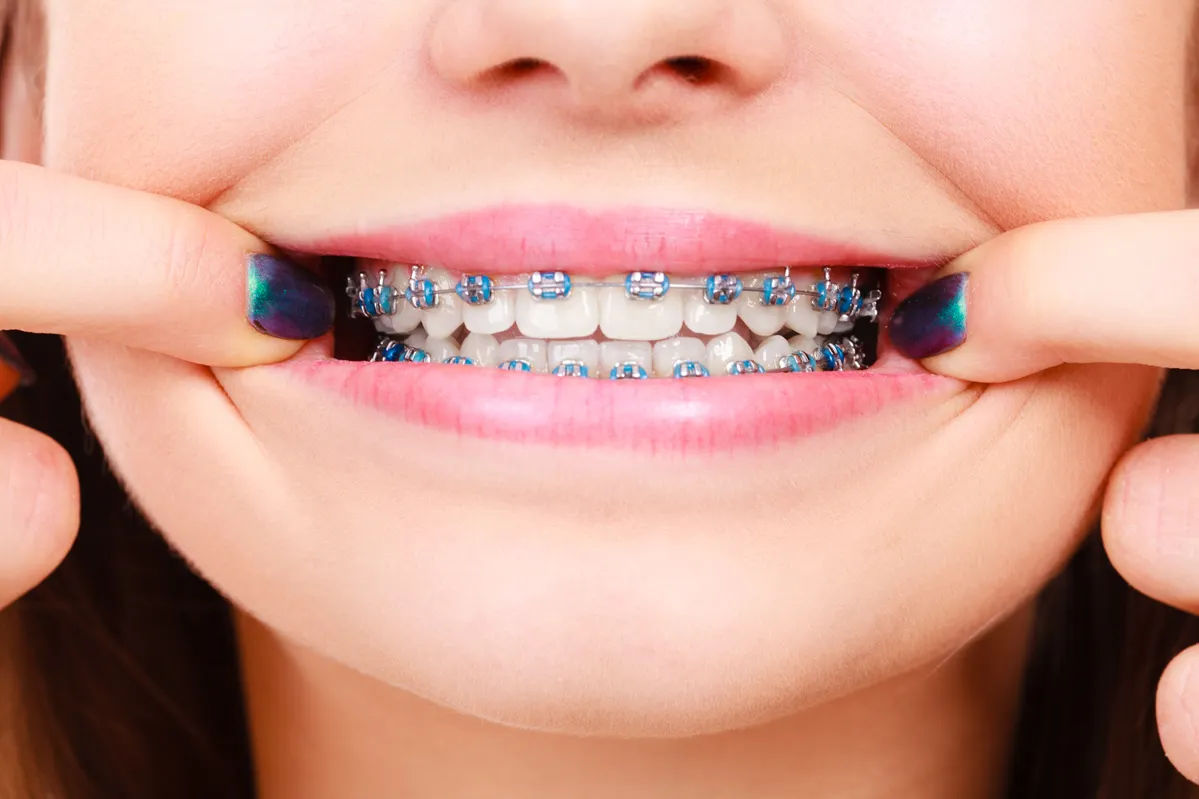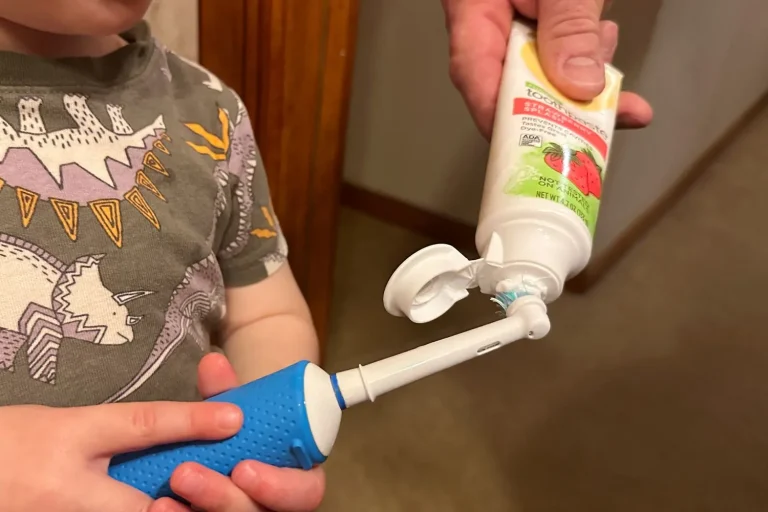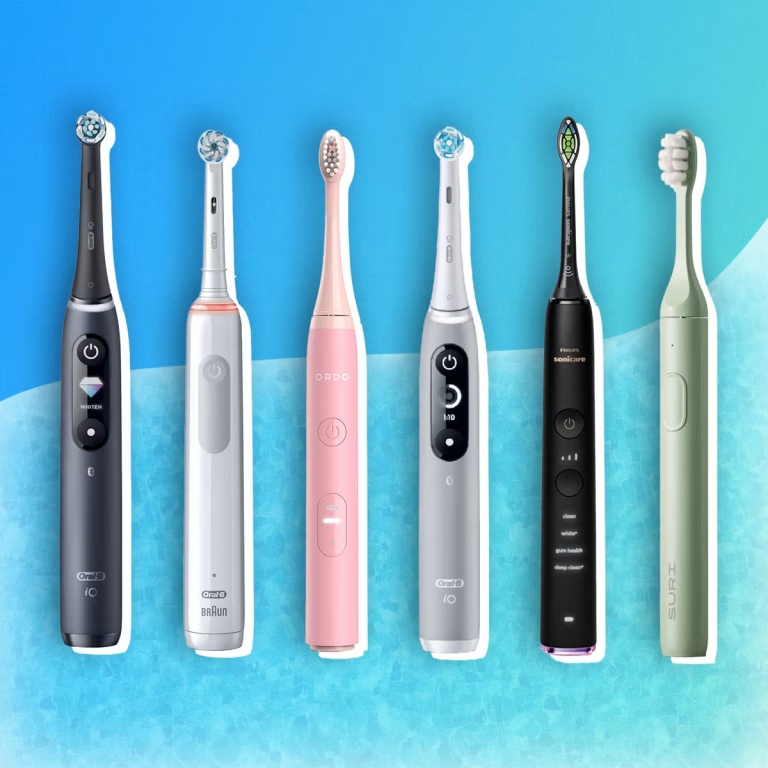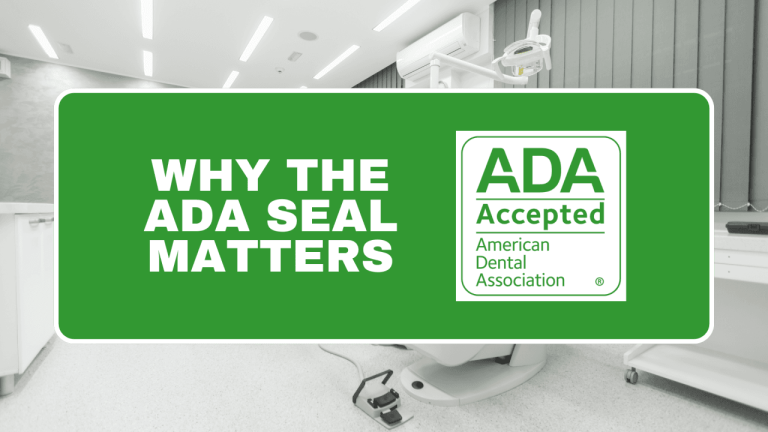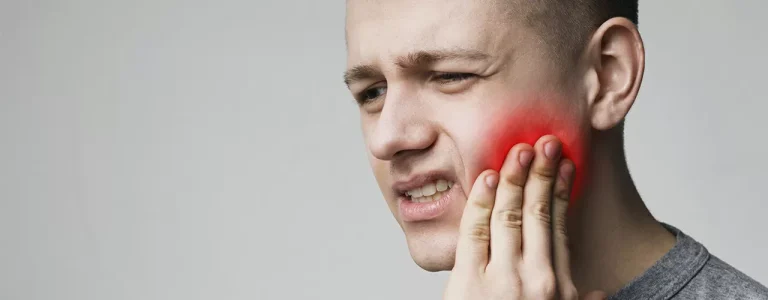Braces Care 101: Maintaining Oral Hygiene with Orthodontic Appliances
1. Why Oral Hygiene is Crucial When You Have Braces
When you have braces, maintaining excellent oral hygiene becomes more important than ever. While braces are an effective way to straighten your teeth and achieve a beautiful smile, they also create additional nooks and crannies where food particles and plaque can easily get trapped. Without proper care, this can lead to a host of dental problems, making it essential to prioritize your oral hygiene routine during orthodontic treatment.
The Challenges of Braces and Oral Hygiene
Braces consist of brackets, wires, and bands that create hard-to-reach areas in your mouth. These spaces can become breeding grounds for bacteria if not cleaned thoroughly. Unlike smooth tooth surfaces, braces provide tiny gaps where plaque—a sticky film of bacteria—can accumulate. If left unchecked, plaque can harden into tartar, which is much more difficult to remove and can only be cleaned by a dental professional.
Risks of Poor Oral Hygiene with Braces
Neglecting your oral hygiene while wearing braces can lead to several issues, including:
- Tooth Decay and Cavities: Plaque buildup around brackets and wires can erode tooth enamel, leading to cavities. The acid produced by bacteria in plaque attacks the enamel, causing permanent damage if not addressed.
- Gum Disease: Inflamed and bleeding gums are common signs of gingivitis, the early stage of gum disease. If left untreated, it can progress to periodontitis, a more severe condition that can damage the gums and bone supporting your teeth.
- White Spots: Demineralization of the enamel around brackets can result in white spots on your teeth. These spots are permanent and can be unsightly, even after your braces are removed.
- Bad Breath: Food particles trapped in braces can lead to persistent bad breath (halitosis), which can be embarrassing and affect your confidence.
The Benefits of Good Oral Hygiene with Braces
On the flip side, maintaining a consistent and thorough oral hygiene routine while wearing braces offers numerous benefits:
- Healthier Teeth and Gums: Regular brushing and flossing prevent plaque buildup, reducing the risk of cavities and gum disease.
- Effective Orthodontic Treatment: Clean teeth and gums respond better to orthodontic adjustments, ensuring your treatment stays on track.
- A Brighter Smile: Proper care minimizes the risk of stains and white spots, leaving you with a healthier, more attractive smile once your braces are removed.
How to Stay on Top of Oral Hygiene with Braces
To keep your teeth and gums healthy during orthodontic treatment, follow these tips:
- Brush your teeth after every meal or snack using a soft-bristled toothbrush or an electric toothbrush.
- Use interdental brushes or a water flosser to clean between brackets and wires.
- Rinse with fluoride mouthwash to strengthen enamel and fight bacteria.
- Attend regular dental check-ups and cleanings to address any issues early.
2. Essential Tools for Cleaning Teeth with Braces
Keeping your teeth and braces clean requires the right tools. While traditional brushing and flossing are important, braces create unique challenges that demand specialized equipment. Investing in the right tools can make a significant difference in maintaining your oral hygiene and ensuring your orthodontic treatment is as effective as possible. Here’s a breakdown of the must-have tools for cleaning teeth with braces:
1. Orthodontic Toothbrush
A toothbrush designed specifically for braces is a game-changer. These brushes often have:
- Angled bristles to reach around brackets and wires.
- Smaller heads to clean hard-to-reach areas.
- Soft bristles to avoid damaging your braces or irritating your gums.
Alternatively, an electric toothbrush with an orthodontic head can provide a deeper clean by removing plaque more effectively than manual brushing.
Pro Tip: Replace your toothbrush or brush head every 3 months or sooner if the bristles become frayed.
2. Interdental Brushes
Interdental brushes, also known as proxy brushes, are tiny brushes designed to clean between brackets, wires, and teeth. They come in various sizes to fit different gaps and are perfect for removing food particles and plaque that regular brushing might miss.
How to Use: Gently insert the brush between your teeth and braces, moving it back and forth to dislodge debris.
3. Water Flosser
Flossing with traditional string floss can be tricky with braces, but a water flosser makes the process much easier. This device uses a stream of water to remove food particles and plaque from between your teeth and around your braces.
Benefits of a Water Flosser:
- Reaches areas that are difficult to clean with regular floss.
- Gentle on gums and braces.
- Ideal for people who struggle with manual flossing.
4. Fluoride Toothpaste and Mouthwash
Fluoride is essential for strengthening tooth enamel and preventing cavities, which is especially important when you have braces.
- Fluoride Toothpaste: Use a pea-sized amount to brush your teeth twice a day.
- Fluoride Mouthwash: Rinse daily to help protect your teeth from decay and reduce bacteria in your mouth.
Pro Tip: Look for products with the American Dental Association (ADA) seal of approval for guaranteed effectiveness.
5. Orthodontic Floss Threaders or Braces-Friendly Floss
Traditional floss can be challenging to use with braces, but floss threaders or specialized orthodontic floss can make the process easier.
- Floss Threaders: These flexible tools help guide floss under the wires of your braces.
- Braces-Friendly Floss: Some floss is designed specifically for braces, with stiff ends that make threading easier.
How to Use: Thread the floss under the wire and gently clean between each tooth, moving the floss up and down along the sides.
6. Mouth Mirror
A small mouth mirror can help you see hard-to-reach areas in your mouth, ensuring you don’t miss any spots while cleaning. This is especially useful for checking the back of your teeth and around your brackets.
Why These Tools Matter
Using the right tools not only makes cleaning your braces easier but also ensures you’re removing as much plaque and food debris as possible. This reduces the risk of cavities, gum disease, and other dental issues, helping you maintain a healthy smile throughout your orthodontic treatment.
3. Step-by-Step Guide to Cleaning Your Braces
Cleaning your braces properly is key to maintaining good oral hygiene and ensuring your orthodontic treatment stays on track. While it may seem daunting at first, following a step-by-step routine can make the process simple and effective. Here’s a detailed guide to help you clean your braces like a pro:
Step 1: Rinse Your Mouth
Before brushing, rinse your mouth with water to loosen any food particles stuck in your braces. This makes it easier to remove debris during brushing and flossing.
Pro Tip: Swish the water around for 30 seconds, focusing on areas where food tends to get trapped, like around brackets and wires.
Step 2: Brush Your Teeth and Braces
Use an orthodontic toothbrush or an electric toothbrush with a soft-bristled head to clean your teeth and braces.
How to Brush Properly:
- Angle Your Brush: Hold your brush at a 45-degree angle to clean both the tops and bottoms of your brackets.
- Brush in Small Circles: Use gentle, circular motions to clean each tooth and bracket individually.
- Don’t Forget the Gumline: Brush along the gumline to remove plaque and prevent gum disease.
- Clean All Surfaces: Brush the front, back, and chewing surfaces of your teeth.
Duration: Spend at least 2 minutes brushing, ensuring you cover every part of your mouth.
Step 3: Use an Interdental Brush
After brushing, use an interdental brush to clean between your brackets and wires. These small brushes are perfect for removing plaque and food particles that your toothbrush might miss.
How to Use:
- Gently insert the brush between your teeth and braces.
- Move it back and forth to dislodge debris.
- Rinse the brush after each use.
Step 4: Floss with a Threader or Water Flosser
Flossing is essential for cleaning between your teeth and under the wires of your braces.
Using a Floss Threader:
- Thread the floss under the wire of your braces.
- Gently slide the floss between your teeth, moving it up and down along the sides.
- Repeat for each tooth, using a clean section of floss each time.
Using a Water Flosser:
- Fill the reservoir with warm water.
- Adjust the pressure setting to a comfortable level.
- Aim the tip at your gumline and between your teeth, pausing briefly between each tooth.
Step 5: Rinse with Mouthwash
Finish your routine by rinsing with a fluoride mouthwash. This helps kill bacteria, strengthen your enamel, and freshen your breath.
How to Rinse:
- Pour the recommended amount of mouthwash into a cup.
- Swish it around your mouth for 30 seconds, making sure to reach all areas.
- Spit it out—do not swallow.
Step 6: Check Your Work
Use a mouth mirror to inspect your teeth and braces. Look for any remaining food particles or plaque, and clean those areas again if necessary.
Tips for Success
- Clean After Every Meal: Food can easily get stuck in braces, so try to brush after every meal or snack.
- Carry a Travel Kit: Keep a small kit with a toothbrush, toothpaste, and interdental brushes for cleaning on the go.
- Stay Consistent: Make this routine a habit to ensure your teeth and braces stay clean throughout your treatment.
4. Foods to Avoid and Braces-Friendly Diet Tips
When you have braces, what you eat plays a significant role in maintaining your oral health and protecting your orthodontic appliances. Certain foods can damage braces, while others are safe and even beneficial for your teeth. In this section, we’ll explore foods to avoid, braces-friendly alternatives, and tips for eating with braces to keep your treatment on track.
Foods to Avoid with Braces
Some foods can break brackets, bend wires, or get stuck in your braces, leading to discomfort and delays in your treatment. Here’s a list of foods to steer clear of:
- Hard Foods:
- Nuts
- Hard candies
- Ice cubes
- Popcorn kernels
- Hard pretzels or chips
- Sticky or Chewy Foods:
- Chewing gum
- Caramel
- Taffy
- Gummy candies
- Sugary Foods and Drinks:
- Soda
- Candy bars
- Sugary cereals
- Sweetened beverages
- Foods That Require Biting into:
- Whole apples or carrots
- Corn on the cob
- Crusty bread or bagels
Braces-Friendly Foods
The good news is that there are plenty of delicious and nutritious foods you can enjoy while wearing braces. Here are some braces-friendly options:
- Soft Fruits and Vegetables:
- Bananas
- Berries
- Steamed or roasted vegetables (e.g., broccoli, zucchini)
- Avocado
- Dairy Products:
- Yogurt
- Cheese
- Milk-based smoothies
- Soft Grains and Proteins:
- Pasta
- Rice
- Soft bread
- Eggs
- Tofu
- Tender meats (cut into small pieces)
- Snacks and Desserts:
- Pudding
- Applesauce
- Soft cookies (without nuts or hard chunks)
- Ice cream (in moderation and without sticky toppings)
Tips for Eating with Braces
- Cut Food into Small Pieces: Avoid biting into hard or large foods. Instead, cut them into smaller, manageable pieces.
- Chew Carefully: Use your back teeth to chew, as this reduces the risk of damaging your braces.
- Avoid Chewing on Non-Food Items: Habits like chewing on pens, pencils, or fingernails can harm your braces.
- Rinse After Eating: If you can’t brush right away, rinse your mouth with water to remove food particles.
Why a Braces-Friendly Diet Matters
Following a braces-friendly diet not only protects your orthodontic appliances but also promotes better oral health. By avoiding harmful foods and choosing nutritious alternatives, you can:
- Prevent damage to your braces.
- Reduce the risk of cavities and gum disease.
- Ensure your orthodontic treatment stays on schedule.
5. Handling Common Braces Problems and Discomfort
Wearing braces is a transformative journey, but it’s not without its challenges. From loose brackets to soreness, it’s common to experience minor issues during orthodontic treatment. Knowing how to handle these problems can save you time, discomfort, and unnecessary trips to the orthodontist. In this section, we’ll cover common braces problems, how to address them at home, and when to seek professional help.
1. Soreness or Discomfort
It’s normal to feel some discomfort after getting braces or after adjustments. This usually subsides within a few days.
How to Relieve Soreness:
- Over-the-Counter Pain Relievers: Take ibuprofen or acetaminophen as directed.
- Saltwater Rinse: Mix 1 teaspoon of salt in warm water and rinse your mouth for 30 seconds to soothe sore gums.
- Orthodontic Wax: Apply wax to any brackets or wires that are irritating your cheeks or lips.
- Soft Foods: Stick to soft foods like yogurt, mashed potatoes, or soup until the soreness subsides.
2. Loose or Broken Brackets
Brackets can become loose or break due to eating hard or sticky foods or accidental trauma.
What to Do:
- If the bracket is still attached to the wire, leave it in place and cover it with orthodontic wax to prevent irritation.
- If the bracket has come off completely, save it and bring it to your next orthodontic appointment.
- Avoid playing with the loose bracket or wire to prevent further damage.
- Contact your orthodontist to schedule a repair appointment.
3. Poking Wires
Sometimes, wires can shift and poke the inside of your mouth, causing discomfort.
How to Fix It:
- Use a cotton swab or the eraser end of a pencil to gently push the wire back into place.
- If the wire is too sharp, cover the end with orthodontic wax.
- If the problem persists, contact your orthodontist to have the wire trimmed or adjusted.
4. Loose or Tight Bands
Bands (the small rings around your molars) can sometimes become loose or feel too tight.
What to Do:
- If a band is loose, contact your orthodontist to have it reattached or replaced.
- If a band feels too tight, avoid chewing on that side of your mouth and schedule an appointment for an adjustment.
5. Mouth Sores or Irritation
Braces can sometimes cause irritation or sores on the inside of your cheeks, lips, or tongue.
How to Manage It:
- Apply orthodontic wax to the brackets or wires causing the irritation.
- Use a topical oral gel (like Orajel) to numb the area temporarily.
- Rinse with a saltwater solution to promote healing.
6. Lost or Broken Retainers or Aligners
If you’re using retainers or clear aligners in addition to braces, losing or damaging them can disrupt your treatment.
What to Do:
- Contact your orthodontist immediately to replace the retainer or aligner.
- Avoid going without your retainer or aligner for too long, as your teeth may shift.
When to Call Your Orthodontist
While many minor issues can be managed at home, some situations require professional attention. Contact your orthodontist if:
- A bracket or wire is causing severe pain or injury.
- You notice significant changes in the alignment of your teeth.
- You experience persistent discomfort that doesn’t improve with home remedies.
- You lose or break a retainer or aligner.
Preventing Common Braces Problems
- Follow Dietary Guidelines: Avoid hard, sticky, or sugary foods that can damage braces.
- Practice Good Oral Hygiene: Brush and floss regularly to keep your teeth and braces clean.
- Wear a Mouthguard: If you play sports, protect your braces with a mouthguard to prevent injuries.
- Attend Regular Appointments: Keep up with your orthodontic visits for adjustments and check-ups.
6. Long-Term Benefits of Proper Braces Care
Taking care of your braces isn’t just about avoiding discomfort or preventing emergencies—it’s about setting the stage for a lifetime of healthy, beautiful smiles. Proper braces care during your orthodontic treatment has long-term benefits that extend far beyond the day your braces come off. In this section, we’ll explore how maintaining good oral hygiene and following your orthodontist’s advice can lead to lasting results.
1. Straighter, More Aligned Teeth
The primary goal of braces is to straighten your teeth and correct bite issues. By taking care of your braces and following your orthodontist’s instructions, you ensure that your treatment progresses as planned.
Long-Term Benefit:
- A properly aligned smile improves your appearance and boosts your confidence.
- Straight teeth are easier to clean, reducing the risk of cavities and gum disease in the future.
2. Healthier Gums and Teeth
Braces create additional spaces where plaque and bacteria can accumulate. By maintaining a thorough oral hygiene routine, you protect your teeth and gums from decay and disease.
Long-Term Benefit:
- Healthy gums and teeth reduce the risk of periodontal disease, which can lead to tooth loss and other health issues.
- Strong enamel and healthy gums contribute to a brighter, more attractive smile.
3. Prevention of White Spots and Cavities
Poor oral hygiene during orthodontic treatment can lead to demineralization, which causes white spots on your teeth. These spots are permanent and can be unsightly.
Long-Term Benefit:
- Proper care prevents white spots and cavities, ensuring your teeth look their best after braces.
- A cavity-free smile means fewer dental procedures and expenses in the future.
4. Improved Bite Function
Braces don’t just straighten teeth—they also correct bite issues like overbites, underbites, and crossbites. A properly aligned bite improves your ability to chew and speak.
Long-Term Benefit:
- A functional bite reduces wear and tear on your teeth, preventing issues like chipping or cracking.
- It also alleviates jaw pain and discomfort caused by misalignment.
5. Reduced Risk of Future Dental Problems
By addressing orthodontic issues early, you can prevent more serious dental problems down the road.
Long-Term Benefit:
- Straight teeth are easier to clean, reducing the risk of plaque buildup and gum disease.
- Proper alignment prevents excessive pressure on certain teeth, lowering the risk of fractures or tooth loss.
6. A Confident, Radiant Smile
One of the most rewarding outcomes of braces is the confidence that comes with a beautiful smile.
Long-Term Benefit:
- A straight, healthy smile can boost your self-esteem and improve your social and professional interactions.
- Investing in your smile now pays off with a lifetime of positive impressions.
How to Maximize the Long-Term Benefits
- Follow Your Orthodontist’s Instructions: Wear rubber bands, retainers, or other appliances as directed.
- Maintain Good Oral Hygiene: Brush, floss, and rinse regularly to keep your teeth and braces clean.
- Attend Regular Check-Ups: Visit your orthodontist and dentist for routine cleanings and adjustments.
- Adopt Healthy Habits: Avoid harmful habits like chewing on hard objects or using your teeth as tools.
Conclusion
Proper braces care is an investment in your future. By taking the time to clean your braces, follow your orthodontist’s advice, and avoid damaging habits, you’re setting yourself up for a lifetime of healthy, beautiful smiles. The effort you put in today will pay off with straighter teeth, healthier gums, and the confidence that comes with a radiant smile. Remember, your orthodontic journey is a partnership—work closely with your orthodontist to achieve the best possible results!
FAQs
Q: Why is oral hygiene so important when wearing braces?
A: Braces create many places for food particles and plaque to hide, increasing the risk of cavities, gum disease, and enamel staining if not properly cleaned.
Q: What type of toothbrush should I use with braces?
A: A soft-bristled toothbrush is recommended. You might also consider an interdental brush to clean between brackets and wires.
Q: How often should I brush my teeth with braces?
A: Brush at least three times a day, especially after meals, to remove food particles and plaque.
Q: What is the best way to brush my teeth when I have braces?
A: Use a gentle, circular motion around each bracket, making sure to clean above, below, and between the wires and teeth.
Q: Is flossing still necessary with braces?
A: Yes, flossing is crucial. Use floss threaders or orthodontic floss to get between the brackets and under the wires to remove plaque and food particles.
Q: What is a floss threader, and how do I use it?
A: A floss threader is a tool that helps you guide the floss under the archwire of your braces, allowing you to clean between your teeth effectively.
Q: Should I use mouthwash with braces?
A: Yes, using a fluoride mouthwash can help strengthen your teeth and prevent decay. An antibacterial mouthwash can also help reduce bacteria and prevent gum disease.
Q: What foods should I avoid when wearing braces?
A: Avoid sticky, hard, or chewy foods that can damage your braces or get stuck in the brackets and wires. Examples include caramel, hard candies, nuts, and popcorn.
Q: What should I do if I experience discomfort or irritation from my braces?
A: Use orthodontic wax to cover any sharp or protruding parts of your braces that are causing irritation. You can also rinse with warm salt water to soothe sore gums.
Q: How often should I visit my orthodontist for check-ups while wearing braces?
A: Regular check-ups, usually every 4-8 weeks, are essential for adjusting your braces and monitoring your oral health. Your orthodontist can also provide professional cleanings and address any concerns you may have.

